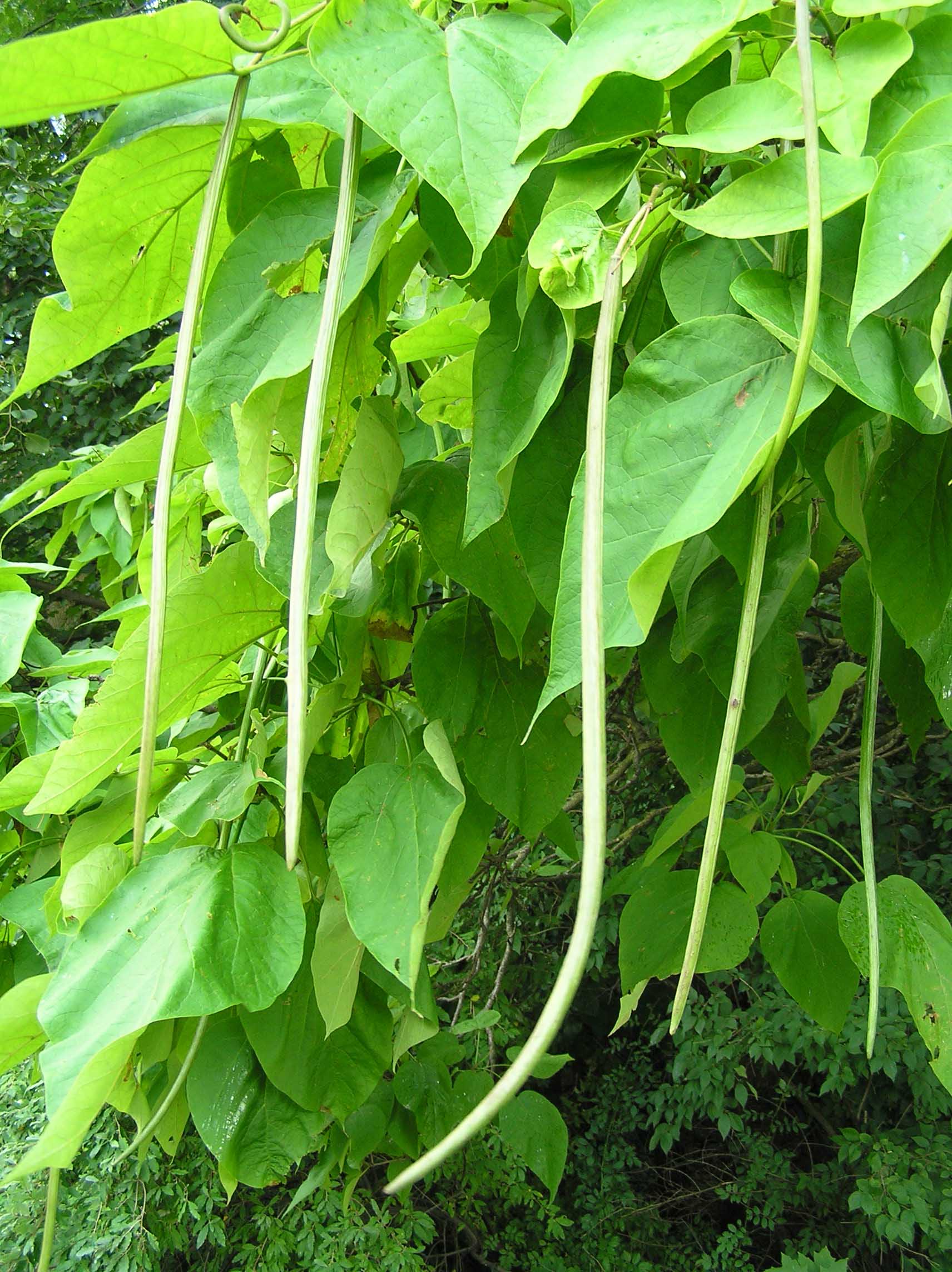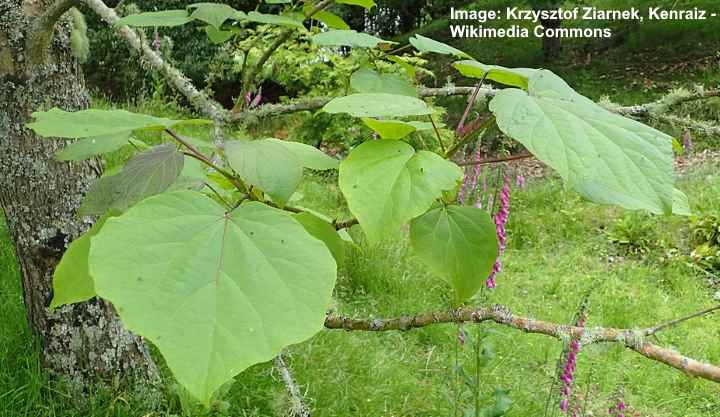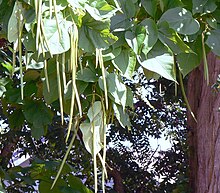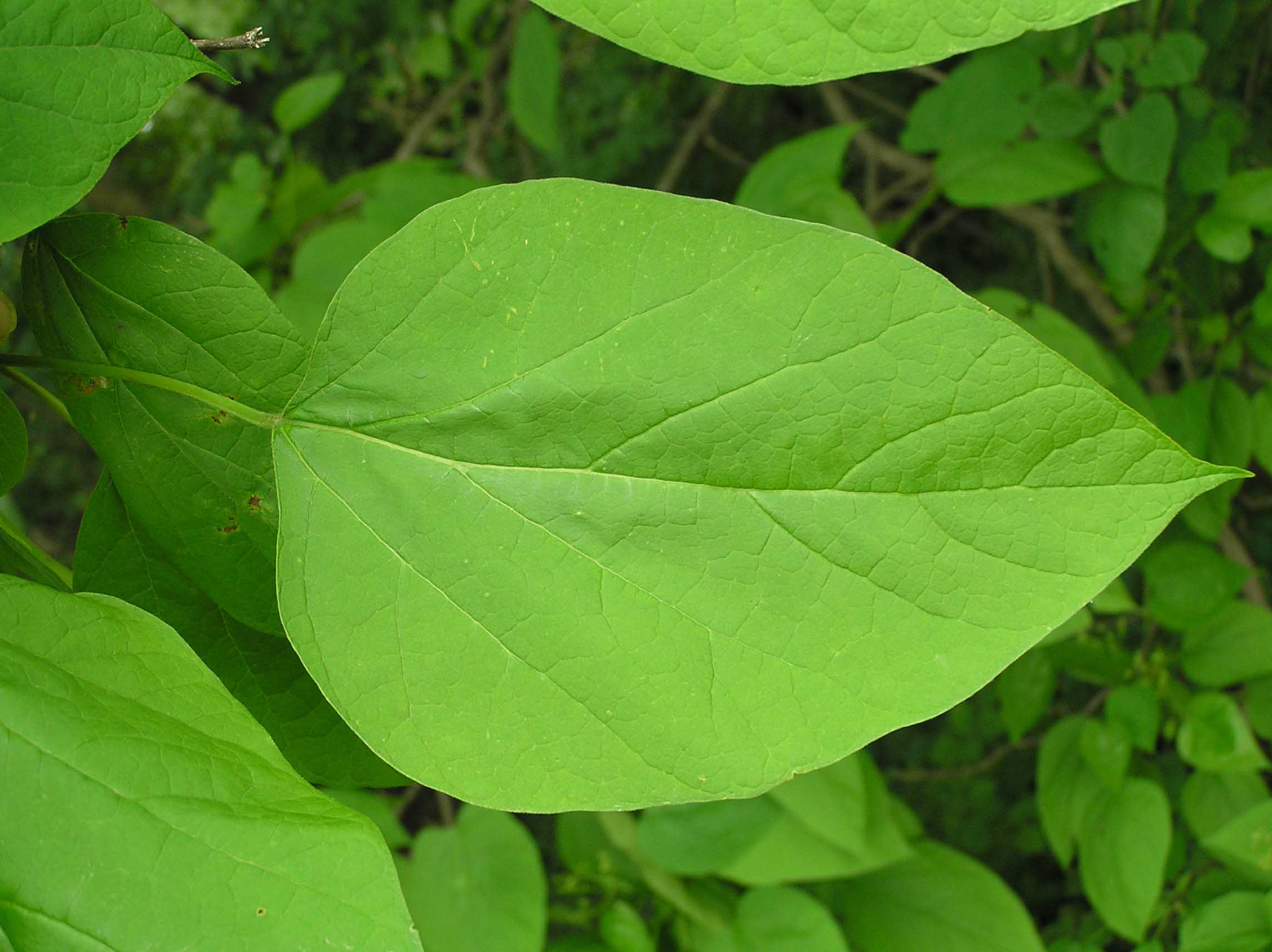northern catalpa tree uses
Full Shade Full Sun Partial SunShade Pests and Problems. The native Northern catalpa tree Catalpa speciosa is a popular choice for homeowners and landscapers.
Small Medium Large Exposure Light Requirements.

. Specimen shade tree street tree wildlife naturalize. Today it is cultivated as an ornamental landscape tree. PFAF calls its roots highly poisonous but various medicinal teas have been made from its bark seeds and pods each addressing different ailments.
It is known from New England except Vermont west through New York to North Dakota and south to Texas Colorado Utah and New Mexico east to Georgia and north to Pennsylvania but is not recorded from New Jersey and Delaware. 10 rows The catalpa tree sometimes referred to as the Indian bean tree is a unique ornamental. Attracts birds pollinators or wildlife.
Tree Pests Credits Northern Catalpa Catalpa speciosa. It should be used much more often. Northern catalpa is associated with low ground along streams rivers and lakes often in the open.
This tree does best in full sun to. This is the favored food-plant of the Catalpa Sphinx Moth which sometimes strips a tree of its leaves. Full Sun Partial Shade.
Northern catalpa is primarily used today as a large ornamental shade tree. The wood mostly used for fence posts also has been used for railroad ties cheap furniture and interior finish. Native geographic location and habitat.
This tree is easy to grow and tolerates many conditions. The genus gets its name from the Catawba Indian tribes name for the tree the tribe itself is also named after the tree. When you need a large ornamental shade tree for your landscape make sure to select the Northern catalpa tree.
The tree is famous for its long seed pods which resemble beans or cigarsDespite the common name of bean tree however this catalpa has no known edible uses. When populations are high the moth can defoliate large sections of the tree. It is native from the lower Midwest into the southern states from southern Illinois south to Arkansas.
Hardy to -30F Maximum Elevation. It is widely planted in urban areas as a street and lawn tree. Only northern white cedar and redwood have lower shrinkageexpansion rates and not by much citation needed.
Medicinal Uses Of The Catalpa Tree. Catalpa has one of the lowest shrinkageexpansion rates of any US. It is widely planted as an ornamental tree.
Mature Size generic TREE 30-50 Tall Average Width. It attracts insect pollinators. People also have planted the Northern Catalpa as an ornamental tree for its showy spring flowers.
Bignonioides respectivelynative to North America. There are a total of only eleven species worldwide with only two speciesNorthern Catalpa and Southern Catalpa C. It grows at a fast rate and under ideal conditions can be expected to live for 70 years or more.
Northern Catalpa is the larval host for the Catalpa Sphinx Moth. The woods unique properties make it excellent for carving and boat-building. It has a high canopy with a typical clearance of 7 feet from the ground and should not be planted underneath power lines.
More modern uses that highlight the woods beautiful grain include furniture interior trim and cabinetry. As well as having a sedative effect the plant also has a mild narcotic action though it never causes a dazed condition. According to the USDA pioneers in the 19th century used seeds and pods to treat asthma whooping cough and various heart diseases.
Northern Catalpa will grow to be about 55 feet tall at maturity with a spread of 30 feet. Bark color and texture. In the past the wood of Northern Catalpa was used to make rail ties and fence posts because its wood is resistant to moisture and decay.
PFAF calls its roots highly poisonous but various medicinal teas have been made from its bark seeds and pods each addressing different ailments. The tree is famous for its long seed pods which resemble beans or cigarsDespite the common name of bean tree however this catalpa has no known edible uses. Drought Drowning and Edema Fungal Disease.
Conservation uses include plantings in mined-land reclamation projects and shelterbelts. Northern catalpa is a large upright to rounded tree reaching 50 feet high and 35 feet wide. In the landscape northern catalpa is very ornamental with large attractive leaves showy panicles of spring flowers and decorative hanging pods in the winter.
Both species have been planted ornamentally all over the United States. The two trees in this genus have a very distinct appearance and. Catalpas durable wood is often used for posts and railway ties.
They are used in traditional medicine to treat conditions ranging from skin infections to conjunctivitis to asthma even though theres no scientific evidence to support these claims. Northern catalpa is known for its beauty and utility. Fence posts utility wood cabinetry and carving.
The flowers of are a good nectar source for native bumblebees and honeybees although their year-to-year performance for honeybees can be variable. It has therefore been used with advantage in preparations with other herbs for the treatment of whooping cough in children it is also used to treat asthma and spasmodic coughs in children. 40-60 x 25-40 Soil Conditions.
Common names for this tree are many and colorfulincluding cigar tree Indian bean tree catawba caterpillar tree hardy catalpa and western catalpa. With its upright form and heart-shaped leaves this tree brings elegance to any space. Two species of catalpa are native to the eastern United StatesCatalpa bignoniodes southern catalpa and Catalpa speciosa northern catalpa.
However catalpa has a history as a popular ornamental tree due to its broad leaves and showy white flowers see photo opposite. Tolerates heat and cold well. 12 rows First cultivated in 1754 the wood of the northern catalpa was originally used for fence posts.
First cultivated in 1754 the wood was used for fence posts and railroad ties because of its resistance to rot and the trees fast growth rate.

Northern Catalpa News From Rockcliff Farm

Northern Catalpa Purdue Fort Wayne

Tree Spotlight Northern Catalpa Vermont Urban And Community Forestry
Catalpa Speciosa Northern Catalpa Minnesota Wildflowers

Northern Catalpa La Urban Forest Program Inaturalist

File Northern Catalpa Leaf Jpg Wikimedia Commons
Northern Catalpa Catalpa Speciosa

Northern Catalpa Catalpa Speciosa Family Bignoniaceae Also Called Indian Bean Catawba And Cigar Tree 09 Flowering Trees Bushes And Shrubs Of Sleepy Hollow Lake

Northern Catalpa A Tree With Fruits Resemblance Green Beans Stock Image Image Of Fruit Long 189384039

How To Choose Plant And Grow A Catalpa Tree Hgtv

Catalpa Tree Types Leaves Flowers Seed Pods With Catalpa Worms

T M Greencare Northern Catalpa Tree On The Tree Guide At Arborday Org
Northern Catalpa Catalpa Speciosa





